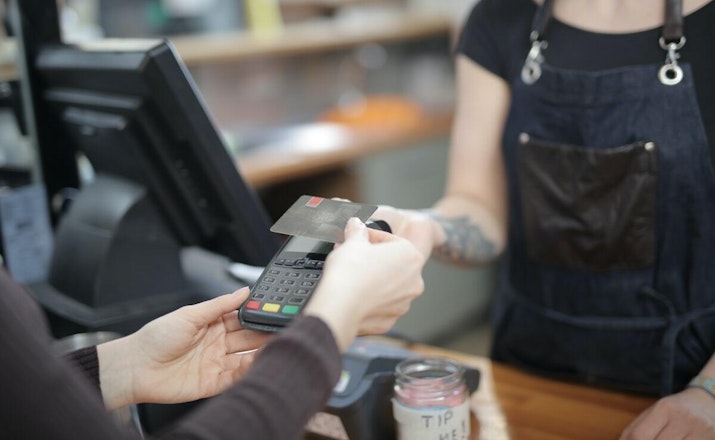Running a dispensary can be tough. Margins are compressing and competition is increasing as record inflation, price compression, and the illicit market persist.
Thankfully, tech-enabled cannabis solutions have emerged to help dispensaries increase profits. A key problem many are now working to solve is the payments problem in cannabis.
Dispensaries have limited payment options because many financial institutions will not work with legal cannabis businesses. Cannabis’ Schedule I designation under federal law has made many banks and card companies, like Visa, unwilling to work with “high risk” cannabis-related businesses.
Cannabis retailers have historically been limited to cash only, which is both expensive (cash handling costs can be as high as 15 percent) and reduces average basket size. Flowhub’s data shows that offering payments via point of banking or ACH increases average basket size by 30 percent.
Read next
The 2023 Guide to Cannabis Payments
Offering these digital payment solutions within an integrated cannabis payments system as opposed to a non-integrated solution is essential for capturing the value that comes from cash alternatives.
Below, we’ll explain the key differences between integrated cannabis payments and non-integrated solutions, and why it's important for dispensaries.
What are integrated cannabis payments?

Integrated—or automated—cannabis payments occur when your card reader “talks” to your dispensary point of sale system. Essentially, they are two devices operating within the same network.
Having the two working in sync eliminates the need for trained budtenders to manually enter each sale quantity into the POS. Instead, the card terminal communicates with the point of sale to automate unnecessary manual processes.
Bottom line: Integrated payments minimize the risk of human error and speed up the checkout process.
Here's how integrated cannabis payments work:
Budtender creates a new sale and scans items into the cart
Payment method is confirmed (cash, debit card etc.)
POS system sends transaction data to the payment terminal
Customer completes the transaction on the payment terminal
Terminal sends final payment amount to POS and completes the transaction
An example of integrated card payments
It’s 4/20. Your store is teeming with customers looking to secure their bud and celebrate. Your checkout process uses integrated cannabis payments and your staff is breezing through transactions and building rapport with customers.
Shoppers are swiping cards and budtenders don’t have to complete any manual data entry to finalize the sale. The process is smooth and streamlined.
Because of this, the line is moving quickly, which increases the number of cannabis transactions per hour and boosts customer satisfaction. Customers are also spending more because they aren't limited to the cash in their pocket.
At the end of the day, you have a crystal clear picture of the day’s performance, an accurate record of all transactions, and can relax knowing that your count is error-free.
What are non-integrated cannabis payments?

A non-integrated—or manual—payment system means that there is a disconnect between the payment terminal and the POS system. Think of the digital payments terminal as a Verizon iPhone while the POS is operating on AT&T. The two are not synced up.
With this setup, the pair of mutually dependent technologies don’t “speak” to one another. Instead, they rely on the staff to manually input information from the card reader to the point of sale.
Bottom line: Non-integrated payments cost cannabis retailers significant time and money.
Here's how non-integrated cannabis payments work:
Budtender creates a new sale and scans items into the cart
Payment method is confirmed (cash, debit card etc.)
Budtender types the amount on the payment terminal*
Customer completes the transaction on payment terminal
Budtender re-enters the final amount from the payment terminal into the POS to complete the sale*
* These are the points at which the process slows down and is exposed to human error, meaning these points should be considered a cost.
An example of non-integrated card payments
It’s 4/20 and the line is out the door. Your store has a non-integrated payment solution, and every transaction requires that the budtenders manually input information, costing valuable seconds for each customer. Occasionally they make a mistake and have to re-enter the info, or worse, finalize the transaction incorrectly.
If a budtender accidentally punches in $20 instead of $200, that’s a $180 loss. Assuming this happens only 1% of the time, you’re set to lose a significant amount of money on this important sales day.
Each manual error worsens the bottleneck, causing some customers to leave the line and go down the block to a competitor. Your biggest sales day of the year is negatively affected because of a needlessly sluggish checkout process.
What are the advantages of integrated cannabis payments?
Cannabis retailers who add integrated payments to their shop’s tech stack will notice the solution improves the following:
Faster check out process
Minimized human error
Reduced shrinkage costs (manual entry errors)
Better customer service (more payment options available)
Increased revenue (higher basket sizes for debit card transactions)
Efficiently managed data
Faster check out process
While the process of manually keying in a few numbers on either end of a payment might seem relatively harmless, when repeated for every transaction by every budtender, the time cost adds up.
Having your POS system and card terminal transfer this information immediately saves precious time, which allows you to process more transactions per day, per week, and per year.
Minimized human error
Checking out a customer should be simple and “stoner proof” for dispensary staff. Integrated cannabis payments eliminate opportunities for human error by automating the data entry component associated with card payments. This eliminates the risk of costly mistakes when budtenders are completing payments.
Reduced cost
Human error at the point of sale costs dispensaries money. Accidentally keying in the wrong information is a persistent drawback of non-integrated systems.
Eliminating that risk was a motivating factor for Greatest Hits when moving to integrated cannabis payments.
If I accidentally enter 20 instead of 200, that's a $180 loss for one person in one day. We have 18 people on a register doing over 300 transactions a day. Those errors add up very quickly and actually amounted to several thousand dollars in lost revenue,
Lucas Baier, VP of Retail Sales for Greatest Hits
Improved customer service
The less time that your budtenders spend messing around with technology the better. Their primary focus should be customer interaction, not data entry.
Every second your budtender spends keying in information is a second they can’t spend helping your customers understand cannabis products, answering questions, or upselling.
With automated payments, budtenders spend less time looking down at a machine, and more time with valued shoppers.
Efficiently manage data
Integrated cannabis payments seamlessly connect the card reader terminal to the POS, so the transaction data is married and organized in the system.
Being forced to do this manually not only opens the door to human error and increases labor costs, but it reduces the quality and scope of reporting.
You can immediately see card transactions within your point of sale and won’t need to check for or resolve any discrepancies.
Ready for integrated payments?
Cash is dying, even in the cannabis industry. Just because dispensaries cannot accept some payment solutions like credit cards, there are still options available.
Solutions like point of banking or ACH payments (bank transfers) are widening in popularity, but not all are equally effective.
You need an integrated cannabis payment solution (not PIN debit) that works with the banking services at your dispensary to remain competitive and increase revenue. Then, you need to help your customers adopt the payment method to maximize the value of your new payment processor.





